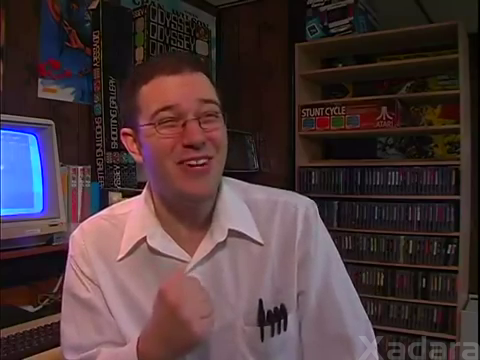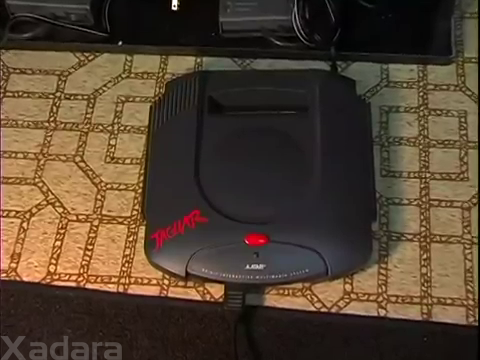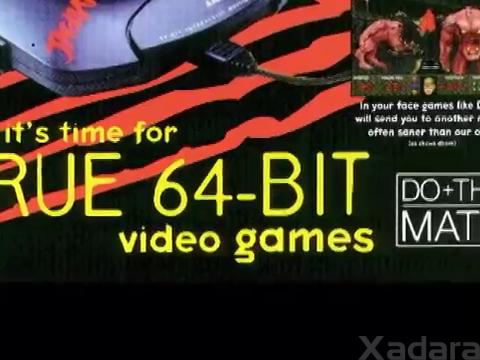It’s time to begin taking a look at what I consider the best season of The Angry Video Game Nerd (Season 4) and what a better way to start off than a history episode! No, I’m not being sarcastic, I actually rather like the episodes where the Nerd talks about the back story of some game or console, and in this case we’re looking at the Atari Jaguar.
Yep, the last console made by Atari. Well, at least, the company that existed at that time — a far cry from the Atari of the late 70’s and early 80’s. James spends some time discussing how Atari dominated the early gaming scene and how they fell from the top as time passed. Consumer confusion was the key reason, and they weren’t the only ones to fall, but that’s not the subject here. The point is setting the stage for what Atari would do following the revival of the video game industry in the late 80’s and early 90’s, developments which culminated in the Atari Jaguar.
Naturally, we get into the early to mid 90’s and the “Bit Wars” as they are known — the time period where marketing began to focus on the “bit rating” of a given processor or subsystem in the gaming console — the first case of this being Sega’s marketing of the Genesis as 16-bit compared to the NES being 8-bit. This made the subtle nuances of console design and capabilities more straightforward (sometimes erroneously) to such a degree that a larger number would look better to the consumer. James parodies this in a comedic exchange that almost seems like he’s re-creating an event from his childhood in asking for a SNES because it’s 16-bit.

Finally we get to the Jaguar itself. All this buildup was to set the stage for the world the Jaguar was entering and how it positioned itself. While the SNES and the Genesis were fighting a 16-bit war in the consumer space, the Atari Jaguar came storming in advertising itself as the first 64-bit gaming system, with advertising suggesting consumers should “do the math” on how much better a 64-bit system could be compared to the likes of the 16-bit giants from Nintendo or Sega, or even the then-new 3DO and its own 32-bit capabilities.
The reality of the Jaguar, however, was a disappointment. The Nerd spends some time throwing out the usual complaints on the system – relatively poor quality games, an odd controller, the lack of end labels on cartridges, and even the lack of a door on the cartridge port to keep dust out of the console (something all Atari consoles lacked) really add up to make the Jaguar just not the gaming experience it looked to be in advertisements.

The Nerd takes a bit of time to focus on the graphics of a selection of games. After all, as a side effect of the Bit Wars most people focused on graphics rather than gameplay, and for such a powerful system one would expect incredible looking games. Instead, they are about on par with what the Super Nintendo Entertainment System and Sega Genesis could do, even in the realm of 3D!
James ends by addressing if the Jaguar was even truly a 64-bit system. He touches on the history of the console again before summing the situation with the console up as it simply not being like other consoles and thus more difficult to program for. This is a fair summary of the system, I would say, and is something I should look into in the near future.

The episode ends with the Nerd letting you know Part 2 will be a look at more games on the system; that’s right, it’s time to “play some Jag!”
Final Rating: 4.0/5
Hey, it’s a history episode. You already know I’m going to love those, but this is a good one. At the time it was certainly refreshing to see someone really talking about the console and Atari history. While the episode doesn’t contain the usual jokes and profanity we know and love from the Nerd, it, oddly, fits more in with the “nerdy” design in that he cares about the machine, and its history, to this degree. Still, it has its funny moments and is all around informative and entertaining, but balanced – a trait lost in most gaming videos these days.

1 Comment
Add a Comment